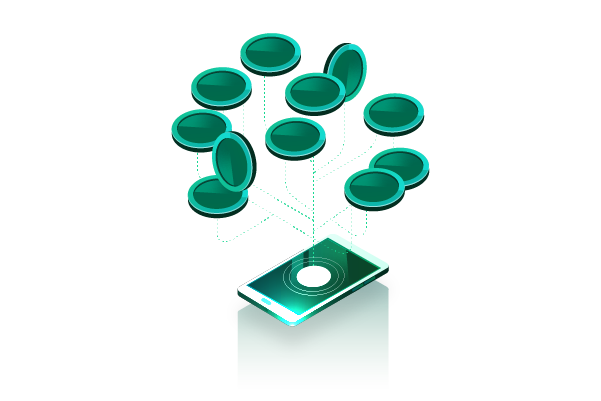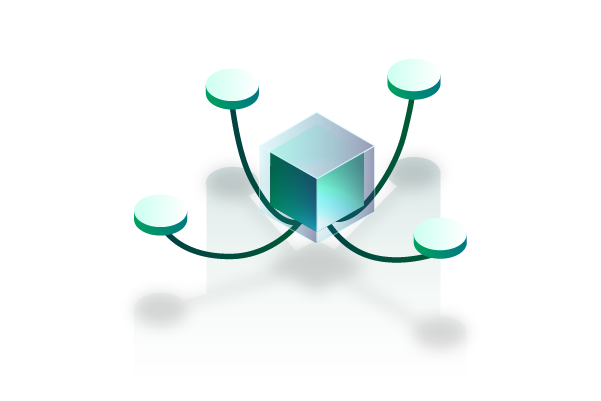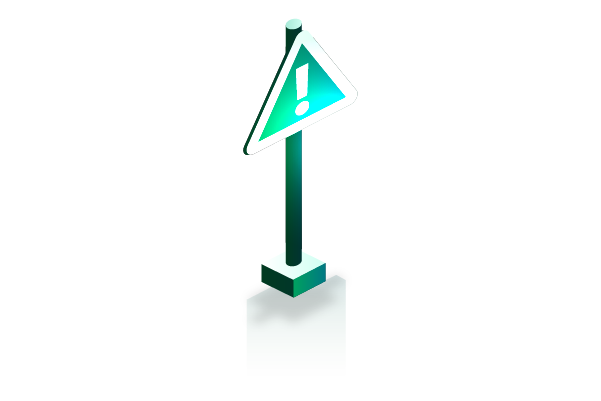As we delve into the world of Web3, it’s crucial to understand the key players driving this transformation. This article presents the top +10 Web3 crypto projects in 2025, highlighting their unique contributions to the decentralized web. Each project has been selected based on its technological innovations, community engagement, and potential to impact the broader digital landscape.
Navigating the complexities of Web3 can be daunting for both newcomers and seasoned crypto enthusiasts. This guide aims to demystify the sector, providing clear insights into each project’s purpose, underlying technology, and real-world applications. Whether you’re looking to invest or simply explore the capabilities of Web3, these projects represent the pinnacle of what’s possible in the burgeoning blockchain space.
What is Web3 and Why Does it Matter?
Web3 represents the third generation of internet services, leveraging decentralized networks based on blockchain technology. This evolution is marked by its focus on user sovereignty and data privacy, contrasting sharply with the centralized models of Web2, where large corporations control significant data repositories and user interactions.
Also Read: 7 Top Crypto Wallet Companies to Consider in 2025
Why Web3 Matters
Web3 is important for several reasons:
- Decentralization: Unlike traditional web services, Web3 operates on decentralized networks, such as blockchain, which distribute control among all users. This reduces the influence of central authorities and potentially decreases the risk of data monopolies.
- User Empowerment: In Web3, users own and control their data. They can manage their digital identities and share information on their terms, which enhances privacy and data security.
- Transparency and Trust: Blockchain technology, which underpins Web3, ensures all transactions are immutable and traceable. This transparency builds trust among users and developers.
- Innovation in Digital Ownership: Web3 facilitates new forms of digital ownership like cryptocurrencies and non-fungible tokens (NFTs), allowing users to own digital assets in ways that were not possible before.
- Interoperability: Web3 technologies are designed to be interoperable, meaning different services and applications can work together more seamlessly. This could lead to a more integrated and user-friendly internet experience.
Implications for the Future
The shift to Web3 has significant implications for how we interact online, handle digital ownership, and view data privacy. While it promises greater user agency and security, challenges around regulation, technological maturity, and user adoption remain. As Web3 continues to develop, it will be crucial to address these issues to ensure it can fulfill its potential as a transformative force in the digital world.
Top 10+ Web3 Crypto Projects to Consider in 2025

The Web3 space is evolving at breakneck speed. From decentralized finance (DeFi) to NFTs, from DAO governance to AI-powered blockchains—2025 is poised to be a pivotal year. In this article, we’re diving deep into 10+ Web3 projects that are turning heads and opening wallets in the crypto community.
Whether you’re a developer, investor, or just curious about what’s next after the 2021 DeFi summer and the 2022 NFT craze, this guide gives you the edge.
1. HeLa
Sector: AI x Web3 Infrastructure
Market Cap: Undisclosed (Private and early VC rounds ongoing)
Launch: Mainnet expected Q3 2025
HeLa is a game-changer. Named after the immortal cell line that transformed biomedical research, HeLa aims to bring the same transformation to decentralized artificial intelligence. Think of it as the operating system for AI in Web3—a decentralized framework that lets devs build, train, and monetize AI models without central gatekeepers.
Key Features:
AI Nodes: Community-run compute nodes process and train models.
Data Sovereignty: Users retain full control of their data and can monetize it through smart contracts.
Cross-chain Interoperability: HeLa supports Ethereum, Polkadot, Solana, and Cosmos out of the box.
On-chain Governance: Token holders vote on proposals, model training priorities, and protocol upgrades.
2. Arbitrum (ARB)
Sector: Scaling / Layer 2
Why It Matters: Arbitrum continues to dominate Layer 2 TVL and is quickly becoming the go-to solution for scalable DeFi and dApps.
Highlights:
Arbitrum Orbit is enabling L3 chains for specialized use cases.
Ecosystem grants fueling hundreds of new protocols.
Low gas, high throughput, and strong developer support.
3. EigenLayer
Sector: DeFi / Security Infrastructure
Why It Matters: EigenLayer lets you restake ETH to secure new protocols, creating a shared security economy.
Highlights:
Explosive TVL growth (already $12B+ as of early 2025).
Yield stacking with lower capital risk.
Backed by leading crypto funds and top ETH core devs.
4. Celestia (TIA)
Sector: Data Availability Layer
Why It Matters: Celestia changes how blockchains are built—separating execution from consensus and data availability.
Highlights:
Perfect for rollups and appchains.
Light clients and efficient fraud proofs.
A cornerstone of the modular blockchain future.
5. zkSync Era
Sector: Layer 2 / ZK Rollups
Why It Matters: zkSync combines scalability with security using zero-knowledge proofs.
Highlights:
zkEVM compatibility for easier dApp migration.
Faster finality and lower fees than Optimistic rollups.
Massive developer momentum post-2024 upgrade.
6. Stacks (STX)
Sector: Bitcoin L2 / DeFi on Bitcoin
Why It Matters: If Bitcoin is the most secure chain, why not build DeFi directly on it?
Highlights:
Clarity smart contracts without needing to change Bitcoin itself.
Ordinals, DeFi, NFTs, and DAOs on BTC.
Explosive growth after Nakamoto upgrade.
7. Lens Protocol
Sector: Decentralized Social
Why It Matters: In a world tired of Meta and Twitter algorithms, Lens offers ownership of your online identity.
Highlights:
Composable social graph for dApps.
Interoperable profiles, posts, and followers.
New monetization paths for creators.
8. Fuel Network
Sector: Modular Execution Layer
Why It Matters: Fuel brings parallel transaction execution to rollups, solving the throughput bottleneck.
Highlights:
Rust-based development.
Superior developer tools and testnet activity.
Tailor-made for modular chains.
9. Aleph Zero (AZERO)
Sector: Privacy / L1 Blockchain
Why It Matters: Aleph Zero mixes speed with privacy, using zkSnarks and DAG-based consensus.
Highlights:
100k+ TPS throughput.
Smart contracts with private state.
Privacy-preserving DeFi in 2025? Yes, please.
10. Shardeum (SHM)
Sector: L1 Scalability
Why It Matters: Shardeum brings Ethereum-like programmability with real-time sharding.
Highlights:
Horizontal scaling (more nodes = more throughput).
EVM-compatible.
Huge traction in Southeast Asia and India.
11. AIOZ Network
Sector: Content Distribution / AI Streaming
Why It Matters: AIOZ is building a decentralized content delivery network—think “Web3 YouTube meets Akamai.”
Highlights:
Edge nodes provide storage and bandwidth.
Integrated with AI-based video indexing and search.
Strategic partnerships in Asia and MENA.
12. Saga Protocol
Sector: Appchain-as-a-Service
Why It Matters: Saga lets devs spin up their own dedicated blockchains—instantly.
Highlights:
Think Shopify for blockchains.
Built on Cosmos SDK.
Impact of Web3 on Different Industries

Web3, characterized by decentralized networks and blockchain technologies, promises significant transformations across multiple sectors. As we explore its potential impacts, it’s evident that industries such as finance, media, and healthcare could experience profound changes. This section delves into how Web3 can leverage blockchain to enhance various aspects of these industries.
Finance
In the financial sector, Web3 could redefine banking and investment services by introducing decentralized finance (DeFi) systems. These systems aim to eliminate intermediaries such as banks, allowing for more direct and efficient financial transactions. Blockchain technology ensures transparency and security, potentially reducing fraud and enhancing trust among users.
Media
The media industry could benefit from Web3 by gaining mechanisms for better copyright management and revenue distribution. Blockchain’s immutable ledger allows content creators to maintain control over their digital rights and receive fair compensation through direct payments from consumers, bypassing traditional media conglomerates.
Healthcare
In healthcare, Web3 technologies could revolutionize data management and patient privacy. Blockchain could provide a secure platform for storing and sharing medical records, ensuring data integrity and accessibility while protecting patient confidentiality. This would facilitate a more coordinated approach to healthcare, improving outcomes through seamless exchange of information among providers.
Overall, Web3 is poised to foster a more interconnected and user-empowered global economy, making industries more transparent, efficient, and secure. The insights provided in this section highlight the transformative potential of blockchain across various sectors, suggesting a shift towards more decentralized and user-centric models.
Challenges Facing Web3 Adoption

Despite its potential, the adoption of Web3 is met with several significant challenges that could impede its integration into the mainstream. This section aims to delve into these primary obstacles, including scalability concerns, regulatory ambiguities, and the essential requirement for user education.
- Scalability Issues: One of the foremost technical challenges for Web3 is scalability. The current infrastructure of blockchain technology, which is fundamental to Web3, struggles to handle high transaction volumes without compromising speed or increasing costs. This section will analyze how scalability issues affect user experience and what solutions are being developed to address this challenge.
- Regulatory Uncertainty: The lack of clear regulatory frameworks for cryptocurrencies and blockchain technology poses a significant barrier to Web3’s adoption. This uncertainty can deter investment and innovation within the space. We will discuss the current regulatory landscape and its implications for businesses and developers looking to enter the Web3 ecosystem.
Also Read: How to Diversify Your Crypto Portfolio
- Need for User Education: The complexity of blockchain technologies and the novelty of Web3 concepts require a steep learning curve for average users. Enhancing user education is crucial for increasing the adoption rate. This part will cover the strategies and initiatives aimed at making Web3 more accessible and understandable to the general public.
- Technological Hurdles: Beyond scalability, there are other technological challenges that developers face in transitioning from traditional web platforms to decentralized alternatives. Issues such as interoperability between different blockchain systems, privacy concerns, and user interface design are critical areas that need addressing. This section will explore these hurdles in depth, discussing both the problems and potential solutions being proposed in the Web3 community.
By addressing these challenges, stakeholders in the Web3 space can pave the way for more robust and user-friendly decentralized applications, fostering broader acceptance and use.
Future Prospects of Web3 Projects

As we explore the horizon of Web3, it’s crucial to speculate not only on its potential trajectory but also on the multifaceted influences that could sculpt its future. This section delves into the emerging trends, anticipated technological advancements, and the ever-shifting regulatory frameworks that are poised to define the landscape of Web3.
- Emerging Trends: The ongoing integration of AI, machine learning, and decentralized finance (DeFi) services within Web3 platforms is expected to further blur the lines between traditional financial systems and blockchain technology. This convergence could catalyze new forms of interaction and transaction mechanisms across digital environments.
- Technological Advancements: Innovations such as enhanced blockchain scalability solutions and more robust privacy-preserving technologies are anticipated. These developments will likely enhance the user experience and expand the capabilities of Web3 applications, making them more accessible and efficient.
- Regulatory Landscape: As Web3 continues to evolve, so too does the scrutiny from global regulators. The future could see a more defined legal framework that supports the safe and ethical development of Web3 technologies while ensuring user protection and system integrity.
- Driving Innovation and Adoption: The combination of these factors is expected to foster significant innovation within the Web3 ecosystem. More intuitive user interfaces, increased network efficiencies, and novel application cases could drive wider adoption and highlight the ongoing relevance of Web3 projects.
Through this forward-looking lens, we can anticipate how these elements might converge to not only drive innovation but also challenge the existing paradigms, ensuring the vibrancy and continuity of Web3 initiatives in the digital age.
Conclusion
Web3 represents a pivotal shift in how we interact with the digital world, promising a more decentralized, secure, and user-centric internet. The top +10 Web3 crypto projects of 2025 demonstrate the diverse applications and immense potential of blockchain technology. As we have explored, these projects are not only transforming existing industries but are also paving the way for new forms of digital interaction and economic models.
However, the path to widespread Web3 adoption is not without its challenges. From technical barriers to regulatory hurdles, these projects must navigate a complex landscape to realize their full potential. Nevertheless, the continued development and refinement of Web3 technologies suggest a bright future, characterized by innovation and greater user empowerment.
As we look to the future, it’s clear that Web3 will play a crucial role in shaping the next generation of the internet. For anyone interested in the intersection of technology and society, keeping an eye on these top 10 Web3 crypto projects is essential. They are not only a window into the future of the digital age but also an opportunity to participate in the creation of a more equitable and decentralized online world.
Disclaimer: The information provided by HeLa Labs in this article is intended for general informational purposes and does not reflect the company’s opinion. It is not intended as investment advice or recommendations. Readers are strongly advised to conduct their own thorough research and consult with a qualified financial advisor before making any financial decisions.

Joshua Soriano
I am Joshua Soriano, a passionate writer and devoted layer 1 and crypto enthusiast. Armed with a profound grasp of cryptocurrencies, blockchain technology, and layer 1 solutions, I've carved a niche for myself in the crypto community.
- Joshua Soriano#molongui-disabled-link
- Joshua Soriano#molongui-disabled-link
- Joshua Soriano#molongui-disabled-link
- Joshua Soriano#molongui-disabled-link

